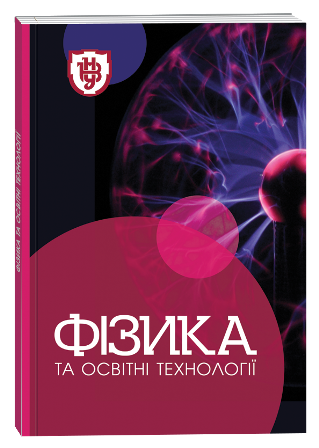ФАКТОР ІДЕАЛЬНОСТІ В СВІТЛОДІОДАХ НА ОСНОВІ InGaN/GaN КВАНТОВИХ ЯМ З НЕОДНОРІДНИМ РОЗТІКАННЯМ СТРУМУ
DOI:
https://doi.org/10.32782/pet-2022-2-3Ключові слова:
InGaN, світлодіод, фактор ідеальності, ефект концентрування струмуАнотація
У цій роботі ми показуємо, що високе значення фактору ідеальності в світло діодах на основі InGaN, вирощених на сапфірових підкладках, може бути пов’язане з ефектом концентрування струму. Цей ефект виникає внаслідок локалізації ліній протікання струму в деяких областях світлодіодної структури, які важко передбачити a priori. В структурах з латеральною інжекцією ефект концентрування призводить до формування високої густини струму поблизу контактів, що викликає зменшення ефективно випромінюючої прощі та локальний розігрів. Численні роботи були направлені та те, щоб зясувати вплив ефекту концентрування на ефективність роботи InGaN світлодіодів. Слідуючи цій тенденції, ми показали, що значна неоднорідність протікання струму може призводити до збільшення “видимого” фактору ідеальності. Такий результат доводить, що фактор ідеальності не визначається лише механізмами рекомбінації та транспорту носіїв заряду як це передбачається класичною теорією p-n переходу. Експериментальні дослідження InGaN (460 нм) світлодіодів з двома різними геометріями контактів доводять, що фактор ідеальності збільшується від 2,2 (геометрія з розтіканням струму) до 3,6 (геометрія концентрування струму). Ці висновки розкривають фактор ідеальності не як суто “внутрішній” параметр p-n переходу. Модифікація фактору ідеальності під дією ефекту концентрування трапляється, переважно, в проміжному інтервалі струмів, де область об’ємного заряду визначає ефективність роботи світлодіодів і може бути помилково трактована, як така, що виникає в результаті зміни механізмів транспорту і рекомбінації носіїв заряду.
Посилання
Sah C., Noyce R.N., Shockley W. Carrier generation and recombination in p-n junctions and p-n junction characteristics. Proc. IRE. 1957, Vol.45, P. 1228-1957.
Casey H.C., Muth J., Krishnankutty S., Zavada J.M. Dominance of tunneling current and band filling in InGaN/AlGaN double heterostructure blue light-emitting diodes. Appl. Phys. Lett. 1996, Vol.68, P. 2867-2869.
Perlin P., Osinski M., Eliseev P.G., Smagley V.A., Mu J., Banas M., Sartori P. Low-temperature study of current and electroluminescence in InGaN/AlGaN/GaN double-heterostructure blue light-emitting diodes. Appl. Phys. Lett. 1996. Vol. 69, P. 1680-1682.
Mayes K., Yasan A., McClintock R., Shiell D., Darvish S.R., Kung P. and Razeghi M. High-power 280 nm AlGaN light-emitting diodes based on an asymmetric single-quantum well. Appl .Phys. Lett. 2004. Vol. 84, P. 1046-1048.
Zhu D., Xu J., Noemaun A.N., Kim J.K., Schubert E.F., Crawford M.H., Koleske D.D. The origin of the high diodeideality factors in GaInN/GaN multiple quantum well light-emitting diodes. Appl. Phys. Lett. 2009. Vol. 94, P. 081113-3.
Shah J.M., Li Y.-L., Gessmann Th. and Schubert E. F. Experimental analysis and theoretical model for anomalously high ideality factors (n>>2.0) in AlGaN/GaN p-n junction diodes. J. of Appl. Phys. 2003. Vol. 94, P. 2627-2631.
Guo X., Schubert E. Current crowding in GaN/InGaN light emitting diodes on insulating substrate. J. of Appl. Phys. 2001. Vol. 90, P. 4191-4195.
Hwang S. and Shim J. A Method for Current Spreading Analysis and Electrode Pattern Design in Light-Emitting Diodes. IEEE Trans. Electron Dev. 2008. Vol. 55, P. 1123-1128.
Xu J., Schubert M.F., Noemaun A.N., Zhu D., Kim J.K., Schubert E.F., Kim M.H., Chung H.J., Yoon S., Sone Ch. and Park Y. Reduction in efficiency droop, forward voltage, ideality factor, and wavelength shift in polarization-matched GaInN/GaInN multi-quantum well light-emitting diodes. Appl. Phys. Lett. 2009. Vol. 94, P. 011113-3.
Dumin D.J., Pearson G.L. Properties of Galium Arsenide Diodes between 4.2 and 300 K. J. of Appl. Phys. 1965, Vol. 36, P. 3418-3424.
Yang Y. and Cao X.A. Complete suppression of surface leakage currents in microperforated blue light-emitting diodes. Appl. Phys. Lett. 2009, Vol.95, P. 011109-3.








